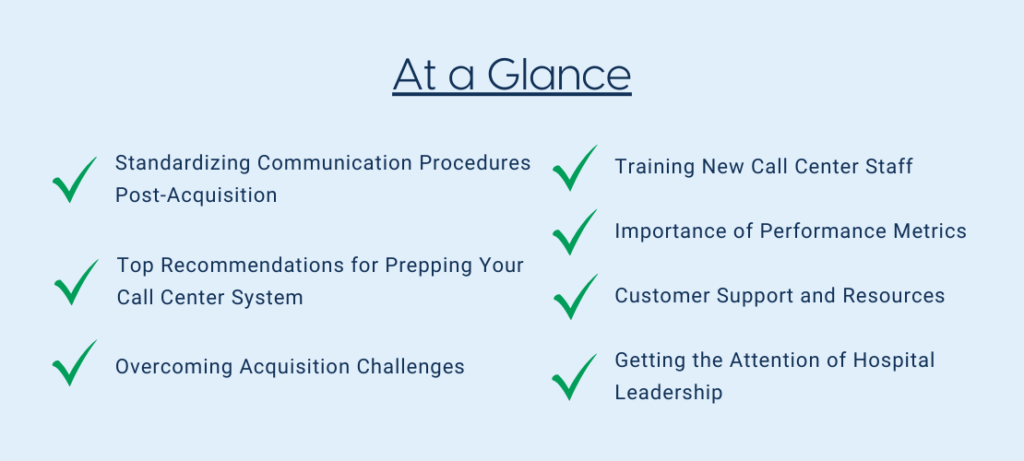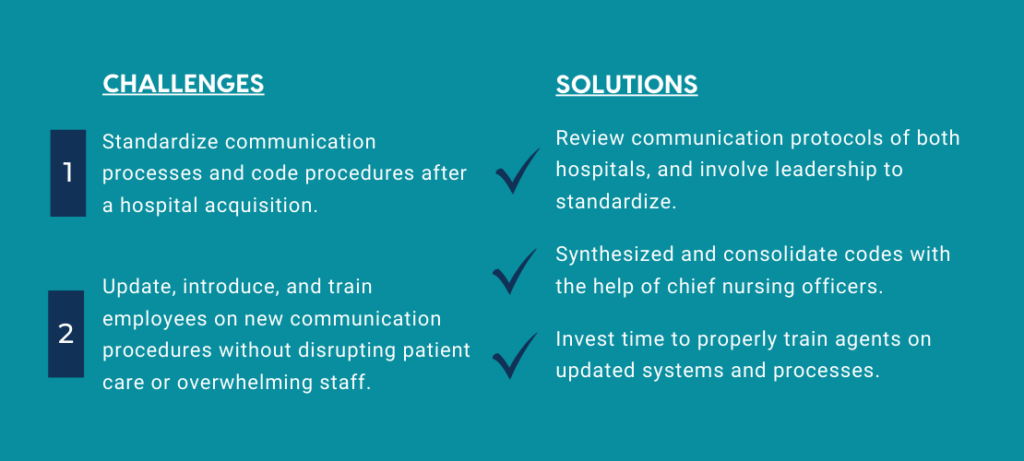St. Luke’s Hospital, named after St. Luke, the patron saint of physicians, was founded by members of the Episcopal Church in 1866 to provide healthcare to the growing city of St. Louis, Missouri. St. Luke’s opened its 25-room infirmary with a staff of eight physicians.
The excellent care provided by the hospital staff enabled growth and expansion. In 1948, the Presbyterian Church joined in the mission of its healing ministry. St. Luke’s Hospital West opened in Chesterfield, Missouri, in 1975, and by 1985, all hospital operations were moved to this campus. In 2018, St. Luke’s acquired the former Des Peres Hospital and renamed it St. Luke’s Des Peres Hospital.
Today, St. Luke’s provides healthcare services in more than 60 specialty areas via its 493-bed hospital in Chesterfield,143-bed St. Luke’s Des Peres Hospital, and nearly 30 other locations in the St. Louis region. St. Luke’s Hospital Heart & Vascular Institute is the exclusive alliance provider in St. Louis for the nation’s number one heart care hospital, the Cleveland Clinic Heart, Vascular and Thoracic Institute. The organization is frequently recognized with honors for excellence in patient care, healthcare quality, safety, patient satisfaction, employee satisfaction, and more.

Standardizing Communication Procedures Post-Acquisition
Hospital acquisitions have become increasingly common in recent years, driven by various factors such as economies of scale, increased bargaining power with insurers, and the need to adapt to changing healthcare delivery models. While the frequency of these deals can fluctuate, the overall trend suggests that hospital consolidation will continue.
The process of a hospital acquisition can be quite disruptive to the people who work for the hospitals involved and often present significant communication challenges – which can have a detrimental effect on patient care. The acquiring hospital oftentimes must develop and implement new policies and procedures to help guide restructuring or merging the two systems.
When St. Luke’s Hospital acquired Des Peres Hospital in 2018, Des Peres Hospital didn’t have a switchboard. A different hospital was handling those services, SSM Health Saint Louis University Hospital. “There were quite a few differences between the two hospitals,” says Bri Korando, Voice Services Manager for St. Luke’s Hospital. “Our CEO did a lot of work rebuilding the administration and examining our core values and strategic plan. This process resulted in a strategic plan with four core pillars. Our project to standardize communications was a significant step towards St. Luke’s overall goal.”
Several members of leadership were involved to some degree with St. Luke’s plan to standardize communication procedures. Still, the bulk of delving into the details and presenting plans to leadership rested on Bri’s shoulders. Bri gives an example, “My department is under the IT umbrella. One of the tasks we addressed immediately was how to handle codes. I read all of Des Peres Hospital’s policies, researched them, and compared St. Luke’s codes to the Des Peres codes. I developed a synthesized overview of all codes and gave it to our chief nursing officers. They met to decide how the codes should be consolidated to be the same across each campus.”
Top Recommendations for Prepping Your Call Center System
Each merger or acquisition scenario is a unique experience. Bri and her team had to find a way to get St. Luke’s Cisco system to work with the Avaya system at the Des Peres location. “I attended the most recent Amtelco Healthcare Seminar and was chatting to fellow attendees. It seems building a bridge between two different phone systems is an uncommon practice,” says Bri. “Once you learn all the teensy details that need to be considered, it was actually very simple.”
Bri would use the same process if she had to go through it all again and has these top recommendations for prepping your communication system:
- Begin with looking at all of the codes for the systems involved.
- Research both hospitals and read process manuals from each location.
- Talk to people from both systems to learn about their workflows.
- Get nursing leadership on board.
- Spend time building a new directory, remembering what you have learned about the systems.
“In general, everybody had to learn two hospitals’ worth of information, codes, workflows, where things are located, etcetera. To help simplify things, each hospital has its own versions of every ACD skill group, code script, and internal and external clients. I use the source codes to differentiate between them. In practice, when someone calls the Chesterfield location, agents are presented with a screen that says either St. Luke’s Chesterfield or St. Luke’s Des Peres, and the corresponding logo appears at the top. This same process is used with all the code screens. This way, it’s obvious which hospital you’re working with.”
Bri Korando, Voice Services Manager
It took Bri about six months to rebuild a new directory from the ground up. She sifted through every tidbit of information and considered the two different phone systems. Bri gives an example of why doing your due diligence is critical. “One campus has four-digit extensions, and the other one has five – which means agents can’t just dial them back and forth,” explains Bri. “I took that into account when I rebuilt the directory. I changed how the dial number fields are set up and updated relevant fields.”
Overcoming Acquisition Challenges
When a hospital acquisition or merger occurs, employees from each site may be overwhelmed by a flood of new information. Change can be difficult, and anxiety over new policies, procedures, and technologies is common.
“The operators handling the calls for the Des Peres campus joined my department,” says Bri. “They were using the old-school consoles that seemed to have a million buttons on them. Their system was very analog, especially compared to the equipment and software we use at our Chesterfield campus. So, they had a pretty hefty learning curve.”
St. Luke’s Hospital in Chesterfield had upgraded to Amtelco’s software years before the consolidation. “When we switched to Amtelco’s software, it was like going from a Fisher-Price interface to an iPhone,” remembers Bri. “We used to have a separate emergency phone that all our lines rang to. Whoever picked up an emergency call the fastest had to process the code – and the code steps were numerous. You had to press buttons all over your keyboard and use F keys for shortcuts. It was a lot of work. With Amtelco, everything is right there in front of you. Our code calls are all scripted and evenly distributed to agents using a round-robin strategy.”

The Chesterfield switchboard has a hard-wired alarm panel joined to Amtelco’s integration engine, MergeComm. Bri explains, “When those alarms are activated, they cause a slight voltage change that goes through a data probe. That action triggers an email to the Amtelco server which has a MergeComm trigger to pull up that specific code script to display on an operator’s screen. Everything they need is right there. All they have to do is follow the script on the screen and go. Our standard is to have all codes processed within 60 seconds or less.”
Bri takes advantage of the software’s analytics function to report information about the code calls the organization receives. She can provide breakdowns for each kind of code by campus and other parameters as needed. Bri comments, “I wrote a process into our code scripts, so an email summary of each STEMI is sent to our program coordinator. She can immediately see all the information she needs to help track her metrics.”
Strategies can be implemented so healthcare organizations can successfully navigate the complexities of hospital acquisitions and ensure a smooth transition for employees. These plans can be kept in place to foster open communication channels permanently.
- Create a centralized communication hub to disseminate information efficiently, such as a shared intranet or collaboration tool.
- Encourage feedback and involve employees in the decision-making process. Seek their input on new policies and procedures and empower them to take ownership of processes.
- Actively listen to employee concerns and suggestions. Show empathy and understanding towards their feelings.
- Provide training on new systems and technologies to ensure employees can use them effectively.
- Establish mentorship programs to help employees navigate the transition.
Bri was aware of the struggles her team members had to face. “In general, everybody had to learn two hospitals’ worth of information, codes, workflows, where things are located, etcetera,” says Bri. “To help simplify things, each hospital has its own versions of every ACD skill group, code script, and internal and external clients. I use the source codes to differentiate between them. In practice, when someone calls the Chesterfield location, agents are presented with a screen that says either St. Luke’s Chesterfield or St. Luke’s Des Peres, and the corresponding logo appears at the top. This same process is used with all the code screens. This way, it’s obvious which hospital you’re working with.”
Thanks to the congruity between the two locations, agents at either facility can take calls for both hospitals. This process also ensures that their hybrid operators can seamlessly handle calls when working remotely.
Other large communication integration projects unrelated to the consolidation were happening at the same time. Bri stresses the importance of undertaking tasks in phases to prevent agents from becoming overwhelmed with the changes.
Training New Call Center Staff
Training is a critical factor in the success of hospital call center operators. A well-trained agent provides high-quality call interaction, improves department efficiency, and contributes to overall patient satisfaction.
Studies indicate that investing time to train and develop staff results in having employees who tend to be more confident, less stressed, and more likely to stay with their jobs. This translates to lower turnover rates and improved morale within the call center.
There are 19 agents on Bri’s team, including her department trainer and Lead CSR, who assisted her with meeting the new operators and training them on the system. Bri comments, “We used a learning-based approach and tailored how we trained our new team members according to how they like to learn: by reading, watching, or doing. Our training process ultimately used a combination of each of those strategies. We could identify who learned quickly and who we needed to spend more time with to ensure everyone was fully and appropriately trained. It was all one big happy learning curve! The total training time for everyone, including nurses, was about six weeks. It went well for everyone involved.”

Proper training is crucial for hospital call center agents because they are often considered frontline healthcare workers and must be equipped with the knowledge to handle calls efficiently and accurately, minimizing errors and misunderstandings. Some essential skills that apply specifically to operators who work in a medical call center include:
- HIPAA Compliance. Training on HIPAA regulations is crucial to protect patient privacy and avoid legal repercussions.
- Medical Terminology. Understanding medical terms helps operators communicate effectively with patients and healthcare providers.
- Active Listening and Empathy. Effective communication skills are essential for building rapport with callers and providing compassionate care.
- Problem-Solving. Training in problem-solving techniques enables operators to handle complex medical situations and find solutions.
“Thankfully, Amtelco provides a lot of resources. The TechHelper website is great, and I use it for everything. It’s saved as a favorite on every browser on my computer. I enjoy the screenshots and spend time reading the documentation. I especially like the Response Element Library – it’s a long PDF, but it’s magical.”
Bri Korando, Voice Services Manager
Importance of Performance Metrics
Healthcare organizations can ensure a smooth transition after a hospital acquisition, maintain high-quality patient care, and optimize call center operations by closely monitoring and evaluating agent performance metrics. Tracking metrics like average handle time (AHT) or first call resolution (FCR) can highlight areas where additional training is needed on new systems, processes, or patient information.
After merging operators from each location, it’s important to examine staffing levels and analyze call volume trends to determine agent work schedules. Tracking metrics like average wait time and abandonment rate is essential to maintaining or improving service level agreement (SLA) compliance to ensure patient satisfaction and regulatory compliance.
Comparing performance metrics to industry benchmarks or historical data can help identify opportunities for improvement and drive continuous improvement initiatives. Bri says, “I use Amtelco’s reporting function to look at our service levels, the number of monthly calls, abandonment rates, and how many codes of each kind we receive. These are scheduled to automatically run monthly, and the system sends me a PDF report via email.”

Customer Support and Resources
Amtelco has been providing call center solutions since 1946 and has years of experience to share with its customers. In addition to the 24/7 customer service provided by Amtelco’s dedicated support team, Amtelco has a diverse structure of resources available to customers, including:
- Webinars.
- TechHelper website.
- National Amtelco Equipment Owners (NAEO) Association and Healthcare User Group (HUG).
- Annual Amtelco Healthcare Seminar.
- Online discussion forums for customers.
“I do not have an IT background. I have degrees in clinical biology and psychology, but they have little to do with the telecom industry or being able to code or write scripts,” says Bri. “Thankfully, Amtelco provides a lot of resources. The TechHelper website is great, and I use it for everything. It’s saved as a favorite on every browser on my computer. I enjoy the screenshots and spend time reading the documentation. I especially like the Response Element Library – it’s a long PDF, but it’s magical.”
Bri uses TechHelper to find solutions to problems and generate ideas for features that her call center can use. She also reaches out to her colleagues and attends Amtelco’s yearly seminar when possible. Bri has also submitted suggestions to Amtelco’s Innovation Machine, a platform where customers can submit ideas for useful features and future software initiatives to Amtelco’s software department.
Getting the Attention of Hospital Leadership
Bri and her team engaged with other people within their organization during the acquisition, and their successful processes gained more awareness from leadership. “It’s common in our industry for a hospital’s switchboard or call center to be located in a basement or a forgotten room. Many outside of our department don’t even know what we do,” explains Bri. “However, post-consolidation, I have attended many ‘show-and-tell’ meetings. Recently, my director, the VP and Director of Safety and Quality, and myself met about improving the process of code blue responses. They were very intrigued to see how it all worked and the information we can provide.”
Now that there is an overall better understanding of the switchboard and how it functions, more conversations are being conducted about improving processes not only at the switchboard but also at the clinical and network levels. Bri has many ideas and goals she’s looking forward to accomplishing, starting with exploring the possibility of using Active Insights, Amtelco’s user-friendly, cloud-based platform. Active Insights provides greater analytics functionality, automatically transcribes and scores calls, and uses natural language prompting and AI to evaluate calls and caller emotion recognition.
“Collaborating with other departments makes things easier for everyone and leads to better efficiencies and safety,” says Bri. “The mission statement for St. Luke’s Hospital is ‘to provide exceptional care to every patient, every time.’ and we mean it. The amount of process improvement and the work that has been done on that is intense – and it’s been great.”



